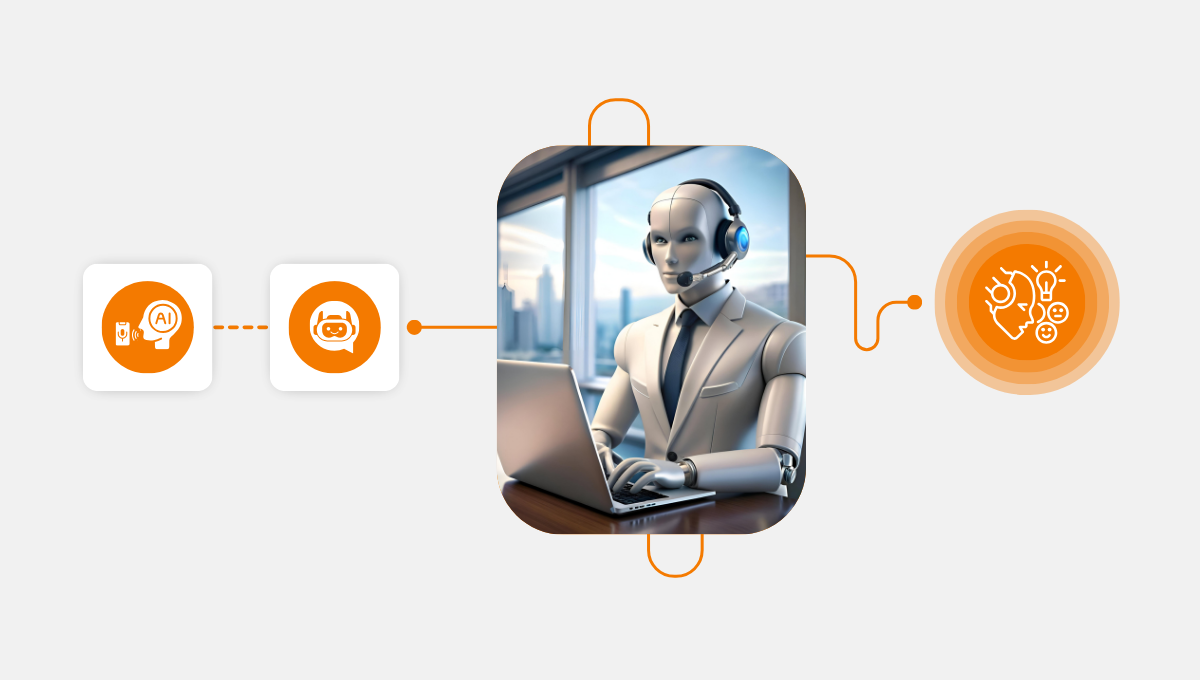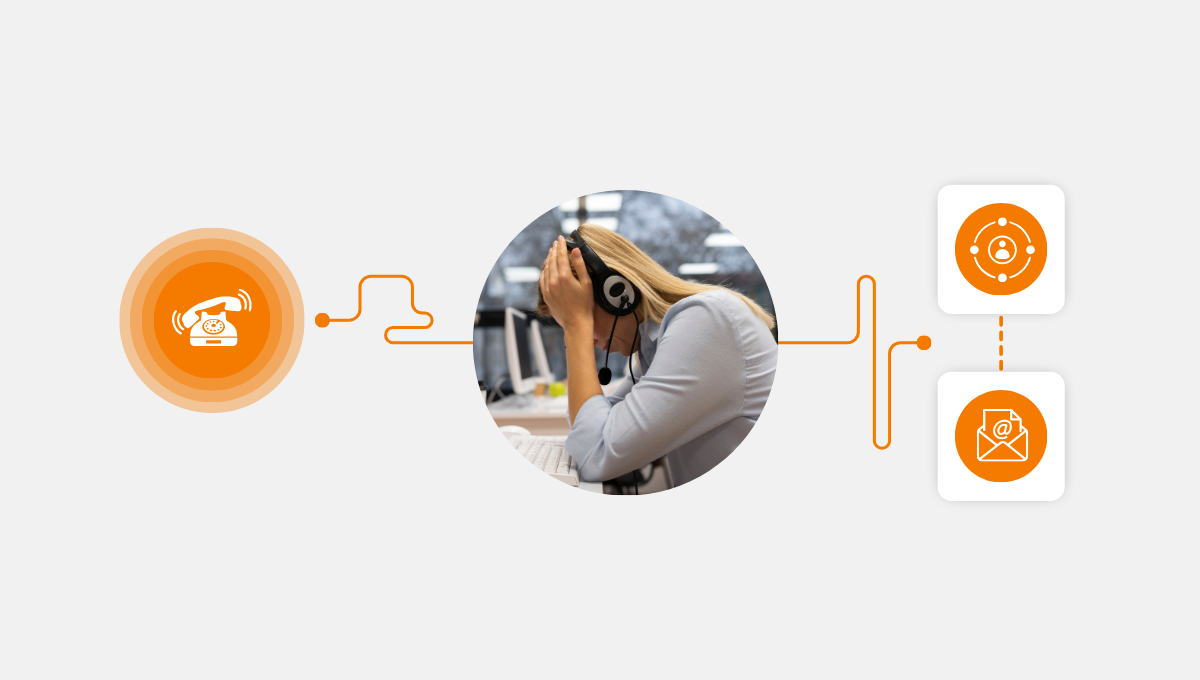Are you trying to improve the efficiency of your call center? If so, one critical parameter to track is the Average Handling Time (AHT). AHT measures a call center rep’s call time to complete a customer’s inquiry from beginning to end.
AHT measurement is crucial as it reveals process inefficiencies in your cloud contact center. It also helps to enhance customer satisfaction. You can improve customer experience and call volume to save time and money by reducing AHT.
In this piece, we’ll dive into what AHT is, how to calculate it, and how to measure it effectively. We’ll highlight how Call Center Studio, a cloud call center software, can help you. It tracks and improves AHT, making it easier to deliver exceptional customer service.
What Is Average Handling Time?
Average Handling Time (AHT) is a key performance indicator (KPI). Call centers use it to measure the average time an agent takes to handle a customer inquiry from start to finish. These durations include hold time, talk time, and any post-call work. AHT is a critical metric to track because it accentuates your call center’s process efficiency. It also highlights the quality of the customer experience you provide.
AHT impacts both the customer experience and the agent experience. Customers expect quick resolutions to their inquiries, and a long AHT can lead to a negative perception of your brand. Meanwhile, agents who handle calls with long AHTs can feel burnt out and unmotivated.

How Do You Calculate Average Handle Time?
Calculating Average Handle Time (AHT) involves adding up an agent’s total time on a call. Add the talk time, hold time, and any post-call work. After getting the sum, divide that number by the number of calls handled during a given period.
Here is an example of an agent handling ten calls. Suppose they have a total talk time of 200 minutes, a hold time of 50 minutes, and post-call work of 20 minutes. Then that agent’s total AHT for that period would be (200 + 50 + 20) / 10 = 27 minutes per call.
Measuring AHT accurately ensures your cloud contact center is operating efficiently. And most importantly, providing excellent customer experiences. Call Center Studio offers a range of features for getting accurate AHT metrics. These include real-time monitoring, call recording, and reporting. The Omni-Channel Customer Service adds multiple communication channels to reduce pressure on one channel. These tools make it easy to track and optimize AHT.
Why Is Average Handle Time Important?
Average handle time metrics are a great asset to have onboard. These metrics highlight parts of your business that need modifications and improvements. Here are some more reasons why AHT is essential:
Customer Experience
A long AHT can lead to frustration and a negative perception of your brand. Customers expect quick resolutions to their inquiries, and a high AHT leads to abandoned calls or customer churn.
Agent Experience
Long AHTs on calls can make agents feel exhausted and unmotivated, which may cause lower job satisfaction and increase churn rates for agents.
Efficiency
By measuring AHT, you can identify inefficiencies in your processes and take steps to optimize them. For example, streamlining post-call work can help reduce AHT.
Cost Savings
AHT is essential for lowering costs in a call center as it impacts the number of calls taken by agents. When AHT reduces, the number of calls dealt with can increase. You can do this without hiring more staff and achieve cost savings and improved efficiency. Lowering AHT can also lower customer wait times, and in the long run, this can also reduce call volume. Monitoring and optimizing AHT improves call centers’ financial performance and customer experience.
Compliance
AHT is an essential metric for regulatory compliance. For instance, specific industries like healthcare or finance have strict efficiency regulations. Some require call centers to keep calls under a certain length, and AHT can help ensure that agents comply with those requirements.
Training and Coaching
AHT measurement helps with training and coaching in a call center. It provides a matter-of-fact way to track agent performance. By measuring AHT, you can identify agents who need extra training or coaching. AHT data helps pinpoint specific areas where your agents may be struggling. Managers can develop targeted coaching programs to improve agent skills reducing AHT. Using AHT measurement for training and coaching, call centers improve agent performance and increase efficiency. Ultimately, this leads to an enhanced customer experience.
Forecasting
AHT can predict both call volume and personnel requirements. Your managers can forecast the number of agents needed to meet anticipated call volumes. They accomplish this by knowing the average time an agent takes to handle a call.
Service Level Agreements (SLAs):
In SLAs between call centers and their clients, AHT is frequently a crucial performance metric. Call centers can show they can offer effective and efficient customer service by hitting AHT targets.

How to Reduce Average Handle Time in a Contact Center
Here are some actionable steps you can take to reduce AHT:
Streamline Processes
Simplify your call flow and reduce hold times by implementing self-service options. Also, automate simple tasks, and provide agents access to customer data in one place. The Automatic Call Distribution (ACD) solution from Call Center Studio assists in distributing incoming calls to client service personnel based on predetermined processes and self-service.
Use Scripting and Voice Reply Systems
Provide agents with scripts or templates to help guide their conversations and reduce call handling time. Also, you can use Call Center Studio’s IVR technology as a valuable tool. Selecting the necessary buttons allows users to direct their calls to the required people, menus, departments, or applications. It also helps users through announcements.
Provide Training and Coaching
Train agents on handling calls efficiently. Always offer ongoing coaching and feedback to improve their skills.
Focus on First Call Resolution (FCR)
Resolving customer issues on the first call can reduce AHT and improve customer satisfaction. Encourage agents to resolve problems quickly and effectively.
Implement Performance Metrics
Implement performance metrics like AHT goals and incentivize agents who meet or exceed them.
Monitor Call Recordings
Track call recordings to identify areas where agents can improve and provide targeted coaching.
Implement Call Center Studio
Call Center Studio is a cloud call center solution that can help you monitor AHT in real-time and identify areas where you can optimize your call center processes.
Bottom Line
Average handle time is an essential metric for measuring call center performance. And reducing AHT can lead to enhanced customer satisfaction and agent engagement. By implementing tools like Call Center Studio and taking actionable steps, you can optimize AHT. This will undoubtedly enhance the overall customer experience in your cloud call center. Prioritizing AHT and other key performance indicators drives efficiency and cost savings. It also helps you to provide exceptional customer service. So why wait? Take the necessary steps to reduce AHT and enhance your call center’s performance today!




